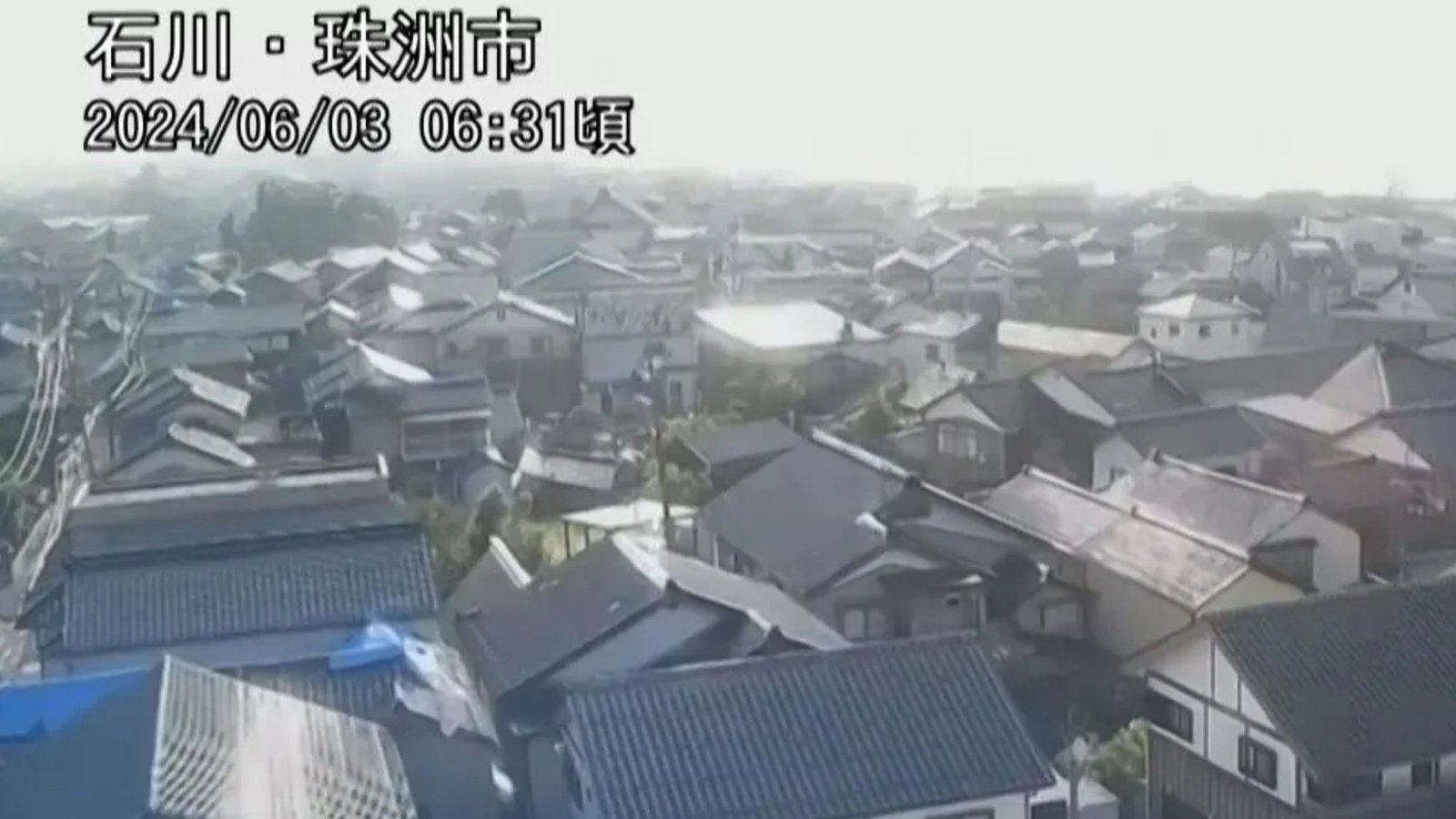EARTHQUAKES have struck a Japanese region for the second time this year, collapsing five homes and leaving residents injured.
A magnitude-5.9 temblor hit the northern top of the Noto Peninsula, known for its beautiful coastal scenery, on Monday morning.
The quake was followed minutes later by a 4.9-magnitude tremor, and then by several smaller quakes within the next two hours, said the Japan Meteorological Agency.
Japan’s north-central region of Ishikawa was still recovering from a powerful quake on January 1 when shakes began again today.
Five houses damaged in the January 1 quake collapsed this morning in Wajiima city, as a quake alarm in the town of Tsubata – about 60 miles southwest of the epicentre – surprised a resident in her 60s.
The woman fell from her bed and suffered an injury which was not life-threatening, according to prefectural officials.
Residents were today seen exiting their homes and temporary shelters, where they have been recovering from January’s quake, to check the harm caused by the fresh wave of tremors.
Chief Cabinet Secretary Yoshimasa Hayashi urged them to be wary of potential falling rocks and landslides.
He said: “Many people who have been living at evacuation centres must have been been frightened.”
Nearby power plant the Shika plant on the Noto Peninsula also suffered minor damage, said The Nuclear Regulation Authority.
Today’s quakes are believed to be aftershocks of January’s magnitude-7.6 earthquake, said JMA seismology and tsunami official Satoshi Harada.
The official urged people to be cautious, particularly near buildings that were damaged earlier this year.
Seismic activity has now slightly subsided and Shinkansen super-express trains and other train services – which were temporarily suspended for safety checks – have mostly resumed.
An inn operator in Wajima, one of the hardest-hit areas on New Year’s Day, told Japanese public broadcaster NHK of how he immediately ducked under a desk when the first quake struck this morning.
Three people are still missing from the January 1 quake which killed 260 people, including some who died due to stress, illnesses and other causes linked to the tremors, according to the Fire and Disaster Management Agency.
Many damaged homes still have not been repaired and more than 3,300 residents remain evacuated.
Japan has been on high alert since 150 powerful tremors struck on New Year’s Day, with several buildings then said to be at a “very high risk” of collapsing.
Powerful quakes and tsunamis struck Japan’s main island, Honshu – the worst of which was a 7.6-magnitude tremor.
Japan’s meteorological agency warned residents that more disasters were likely to hit the area again soon.
A spokesperson for the agency said: “Do not wander away from the safe place.
“There is a very high risk of buildings collapsing and other damages caused by the tremors.
“History tells us that the similar scale of earthquakes can reoccur within two to three days.”
Ishikawa was one of the worst-affected areas, alongside Toyama and Niigata.
Tsunami waves more than a metre tall toppled over buildings, tore apart roads, and caused major fires.
Pictured showed homes left crumpled and caving in on themselves.
Some of the buildings had been smashed into by flying cars, while others were pulled into the sea by the tsunamis.



















